An Introduction to Sediment Control for Homeowners: Managing Erosion on Your Property
Is your building site washing away down the street after a heavy rain? You might be facing an erosion problem. This introduction guide walks you through the steps to effectively manage erosion and control sediment.

Have you noticed gullies forming in your garden or dirt washing down your driveway after heavy rain? If so, you’ve got an erosion problem on your hands. Erosion refers to the gradual wearing away of land, and it’s an issue many builders and site owners face.
The good news is there are some simple ways you can manage erosion and control sediment on your site. By putting a few preventative measures in place, you can stop erosion in its tracks and avoid unwanted dirt and debris ending up where it shouldn’t. In this article, we’ll walk you through the key steps to get erosion under control so you can have peace of mind that your garden and home exterior will remain intact for years to come.
Understanding Sediment Control and Erosion
To get erosion under control on your site, you first need to understand what causes it and the different types you may encounter.
Erosion happens when the soil particles are detached and transported by wind, water, or ice. The two most common types are sheet and rill erosion. Sheet erosion is the uniform removal of soil in thin layers, while rill erosion forms small channels. Gullies are larger eroded channels that require professional help to fix.
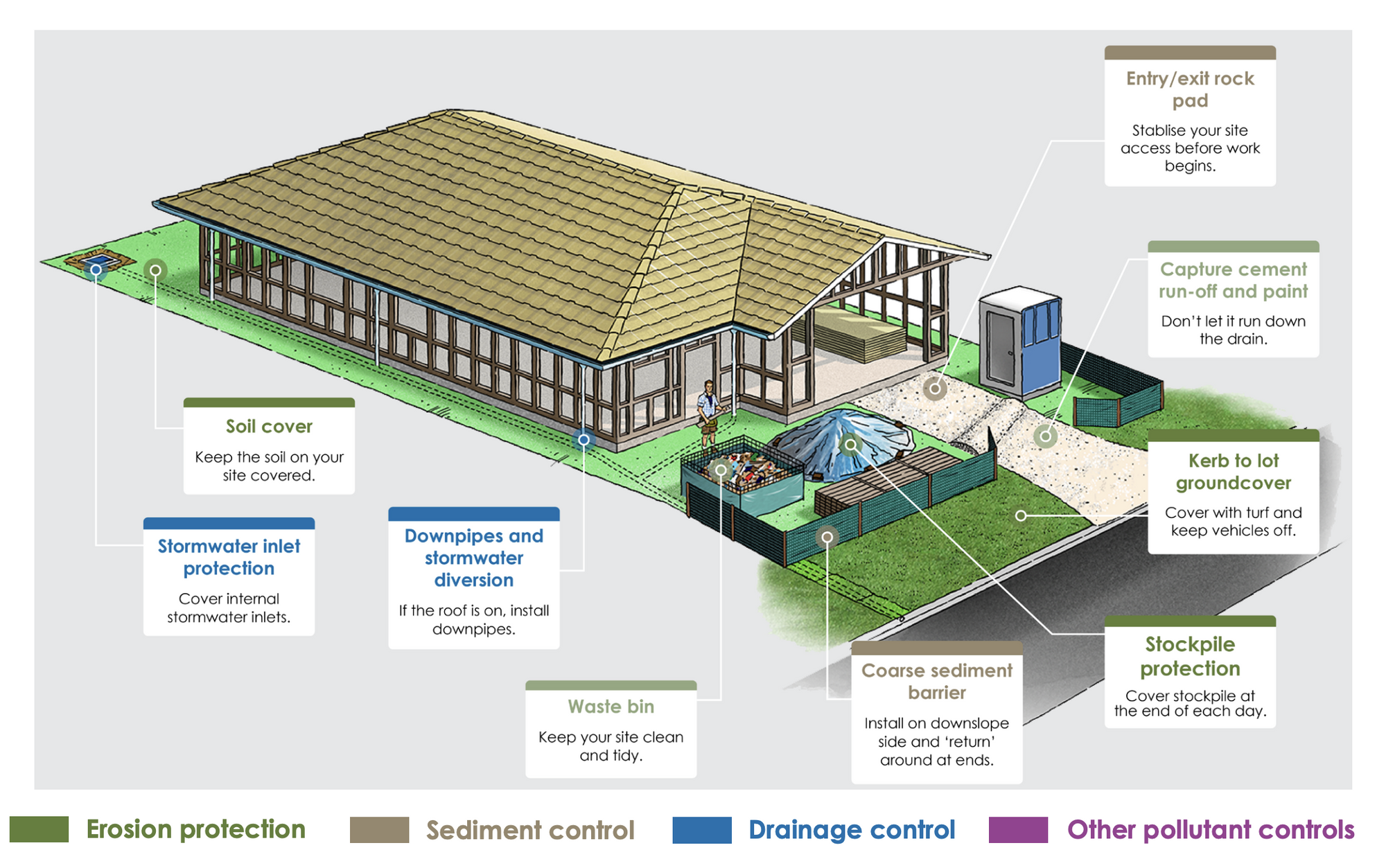
Controlling water erosion
The key is managing rainwater runoff. Here are some tips:
- Direct downpipes away from foundations and onto grass or gravel or use temporary downpipes connected to the stormwater system. This prevents soil saturation and minimises runoff.
- install silt fences, sediment traps, or diversions to redirect runoff and capture sediment. Ensure to anchor them properly by trenching fences into the ground before backfilling.
- Stabilise exposed soil with vegetation, mulch, gravel, or geotextiles as soon as possible.
- For rills and small gullies, you can use check dams, riprap, or geotextiles to slow flow rates and trap sediment.
- Grade and re-vegetate yards to minimise steep slopes. The gentler the slope, the less erosion will occur.
- Avoid clearing land or compacting soil whenever possible. Both destroy vegetation and soil structure, increasing runoff and erosion.
- Check local regulations regarding erosion control structures, like silt traps - as permits may be required for certain practices. It's best to contact your municipality for guidance.
By understanding the causes of erosion and implementing control measures suited to your site, you can effectively curb erosion and protect your property. Consistent monitoring and maintenance are key to success. With time and patience, you'll get the upper hand on this destructive force of nature.
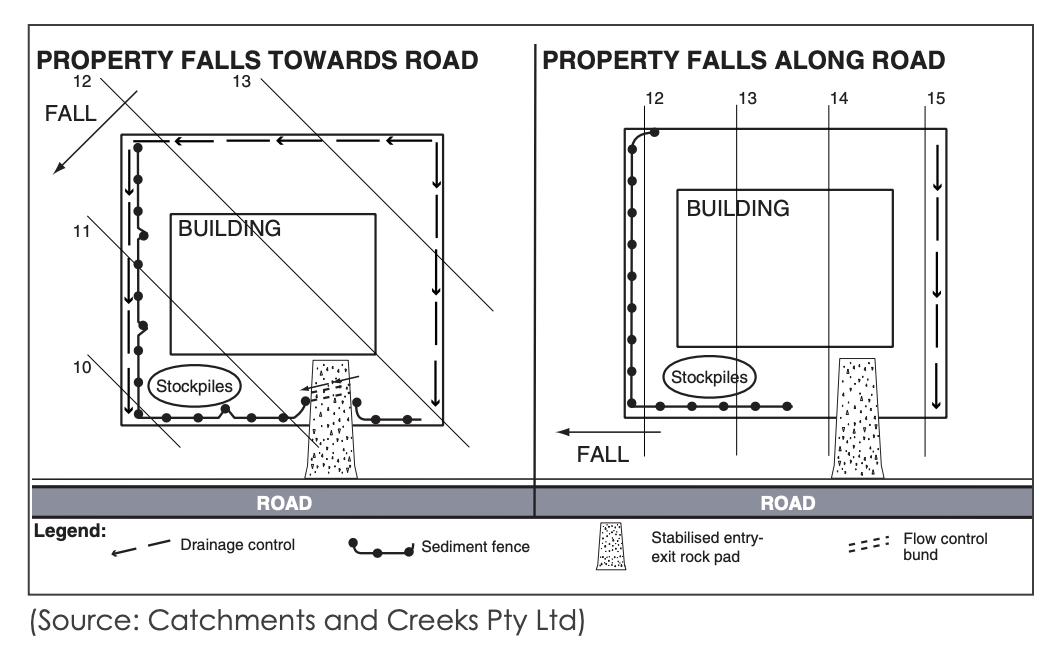
Developing an Erosion and Sediment Control Plan
To get erosion and sediment under control on your property, you'll need to develop a solid plan of attack.
First, evaluate your site. Walk the perimeter of your site and note any problem areas like bare soil, gullies, or places where water flows heavily during rain. Also check places where runoff from driveways, walkways, or roof drains concentrates.
Next, consider control measures. Silt fencing, straw bales, gravel bags, and temporary berms can help filter and divert sediment. Re-vegetating bare areas with grass, trees or shrubs is also helpful. You might need to re-grade slopes to a more stable angle.
Then, determine priorities. Focus first on fixing major issues, especially those impacting waterways, neighbours or structures. You can then move to more minor problems.
Create a schedule for implementing controls. Do major earth-moving projects in dry weather. Plan for temporary measures to be placed before the rainy season and remain until vegetation is established.
Finally, maintenance is key. Inspect control measures regularly, especially after heavy rain. Look for signs of failure or damage and make repairs quickly. Re-vegetated areas will need watering and possibly fertilising.
You can get erosion and sediment under control by evaluating your site, selecting appropriate controls, prioritising issues, developing an implementation schedule, and ensuring proper maintenance. Your property will benefit, and so will the surrounding environment. With time and effort, you'll have an effective erosion and sediment control plan.

Implementing Effective Sediment Control Measures
Once you’ve identified areas of erosion and sediment buildup on your property, it’s time to put effective control measures in place. The goal is to minimise soil loss and runoff, so you’ll want to consider the following steps:
Instal silt fencing
Silt fencing is a barrier to catching sediment as water flows over land. Instal silt fencing along contours of slopes, at the base of disturbed areas, and around soil stockpiles. Bury the bottom of the fencing a few inches in the ground to prevent water from flowing underneath. Inspect regularly and repair any damage to maintain effectiveness.
Re-vegetate bare ground
Planting grass, trees, and other vegetation helps stabilise soil, reduces runoff speed, and traps sediment. Hydroseeding, which sprays a slurry of seed, fertiliser, and mulch onto the soil, can efficiently establish vegetation on large, disturbed areas. Hand seeding and raking in topsoil or compost will also work for smaller patches.
Create diversion channels
To redirect runoff away from exposed soil, dig out shallow channels that run across the slope. Divert the water to a vegetated area or sediment trap. Line the channels with rocks, vegetation, or erosion control matting for stability. You should periodically check that the channels are clear of debris and still effectively diverting water.
Minimise soil disturbance
Limit soil disturbance activities like excavating, grading, and compaction as much as possible, especially on steep slopes. Phase projects to minimise the area of exposed soil at any one time. Stockpile topsoil to re-spread once work is done.
By implementing these sediment control measures, monitoring them regularly, and making necessary repairs and adjustments, you can effectively minimise erosion on your property. Your soil, waterways, and community will thank you for it.
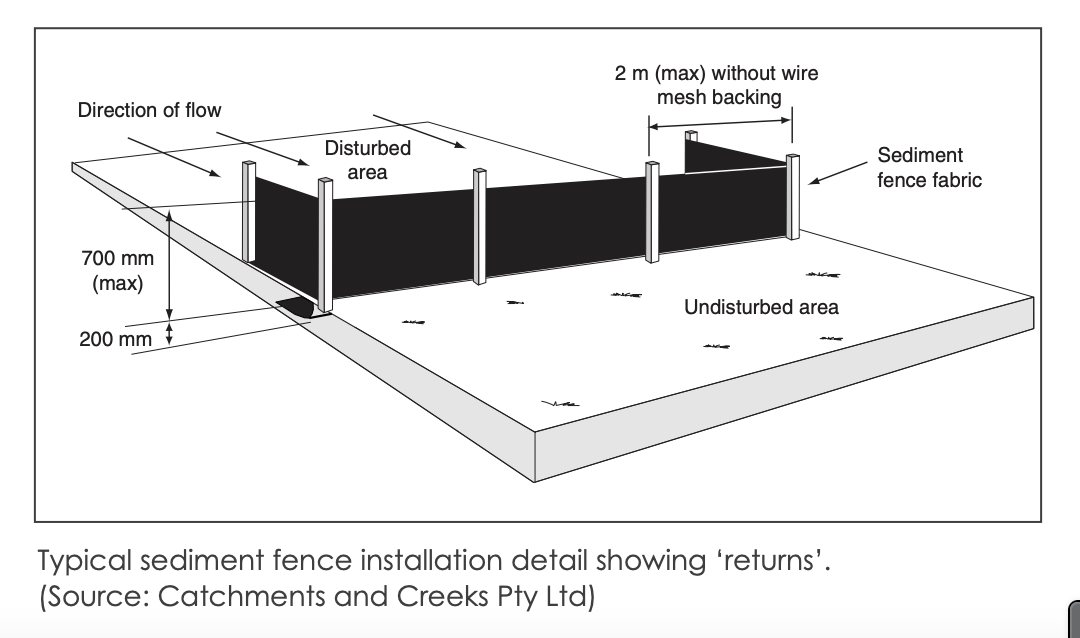
Inspecting and Maintaining Your Sediment Controls
Now that you have sediment controls in place, it’s important to inspect and maintain them regularly to ensure maximum effectiveness. Perform routine inspections, especially after heavy rains. Look for any signs of erosion or sediment buildup and make repairs immediately.
Inspect Barriers
Walk along the perimeter of any silt fencing, straw bales or gravel bags you’ve installed. Look for tears, holes or places where the barrier is no longer securely staked in the ground. Repair or replace damaged sections right away. Sediment can escape through even small openings.
Check any gravel bags or straw bales for signs they are beginning to deteriorate or come apart. Replace them if they start to slump or spread out. Properly installed controls should remain upright and tightly packed together.
Clear Sediment Buildup
Look for areas where sediment, mud or debris has collected, especially along silt fencing, gravel bags, inlet protection or storm drain covers. Remove any buildup with a shovel and transport it to an approved disposal site. Don’t just spread it around your property.
Sediment accumulating around controls reduces their effectiveness and allows runoff to bypass them altogether. Remove built-up sediment regularly to maintain the proper function of your erosion controls.
Stabilise Exposed Soil
Check any bare soil areas for signs of erosion like rills, gullies or sediment deposits. Re-seed or re-vegetate exposed soil as needed to provide protection. You may need to rake the area first to roughen the surface and create better contact between the soil and any seeds or plants.
Mulch, erosion control blankets or turf reinforcement mats can also help stabilise exposed soil until vegetation is established. The more soil you can shield from the impact of rain and runoff, the less erosion will occur.
By routinely inspecting and properly maintaining your sediment controls, you’ll minimise erosion on your property and prevent sediment from entering local waterways. Be diligent and make any necessary repairs or replacements right away to keep your controls functioning as intended. With regular observation and upkeep, you can successfully manage erosion and sediment control at home.
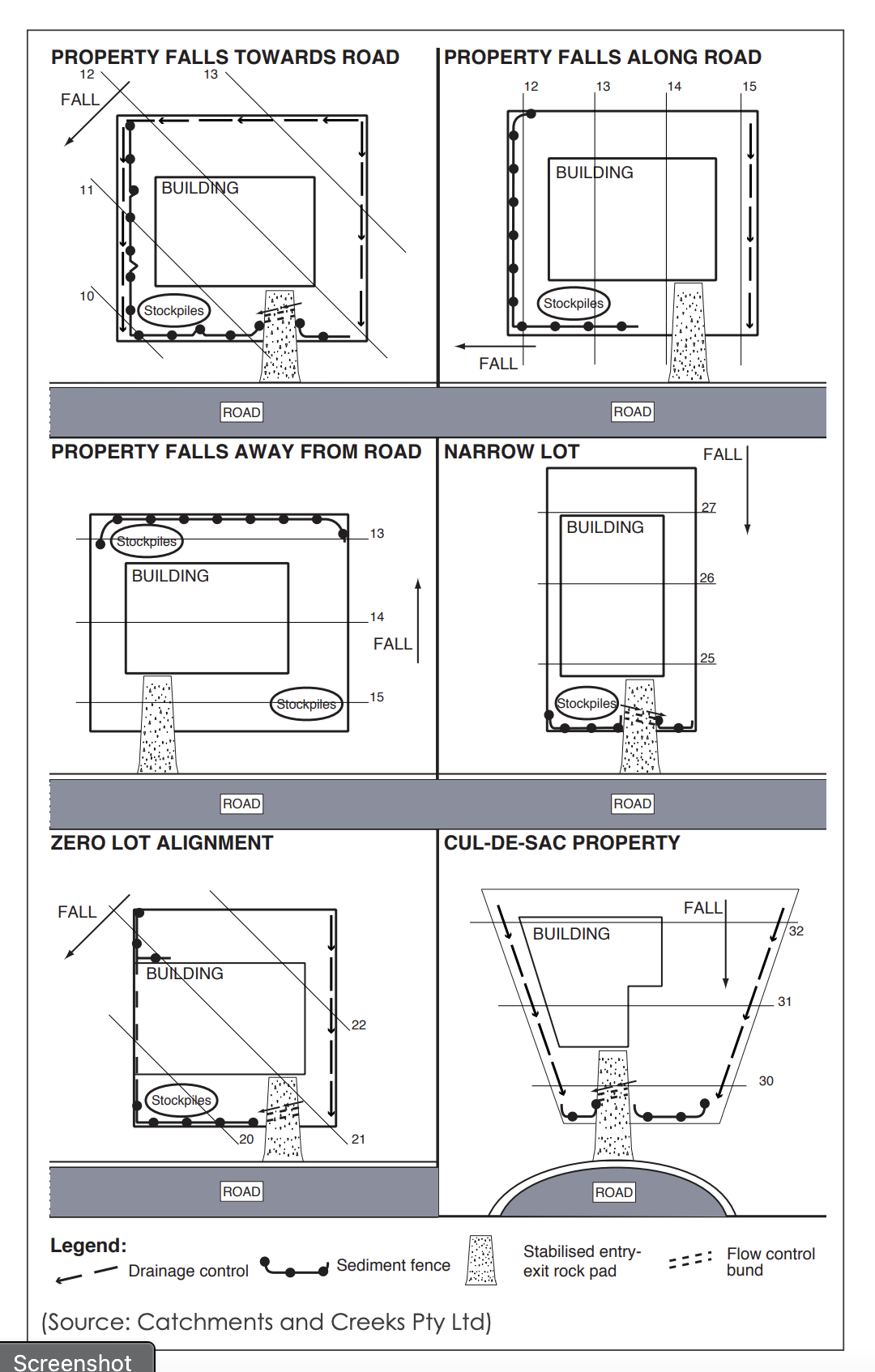
Tips for Minimising Erosion and Sedimentation on Your Property
Managing erosion and sediment runoff on your property requires diligent effort but the rewards are well worth it. By following these tips, you can minimise erosion and do your part to protect the environment.
Stabilise exposed soil
Any bare soil on your property is vulnerable to erosion. Cover exposed areas with mulch, gravel, or vegetation as soon as possible. Grass seed, wildflower mixes and clover are affordable, low-maintenance options.
Direct water runoff away from soil
Ensure rain gutters and downspouts channel water away from foundations and bare soil. Installing splash blocks, drain pipes or rain barrels can help divert runoff from erosion-prone areas.
Maintain your treatment tank
If you have an onsite treatment tank, check it regularly and fix any leaks immediately. Excess water from malfunctioning treatment tanks systems can saturate the soil and speed up erosion. Local Councils mandate the servicing of treatment tanks to ensure they remain in a good serviceable condition.
Reinforce creek banks and shorelines
If you live on a waterfront property, creek banks and shorelines are especially prone to erosion. Planting shrubs, trees and grasses along the water's edge will help stabilise the soil. You can also install riprap, retaining walls or gabion baskets for added protection.
Limit disturbance
Minimise actions that disturb the soil like clearing vegetation, grading land or compaction from vehicles and equipment. These activities destroy soil structure, reduce infiltration and accelerate erosion. Limit construction to dry seasons when possible.
Check local regulations
Many municipalities have bylaws on sediment and erosion control. Ensure you understand and comply with any regulations in your area regarding dumping fill, changing grades, de-vegetation or working near watercourses. Failure to do so can result in legal consequences and environmental damage.
Making erosion and sediment control a priority on your property will help ensure healthy soil, clean waterways and a sustainable environment for generations to come. Every small action makes a difference.
Conclusion
So there you have it, some effective tips and techniques for keeping sediment and erosion under control in your own backyard. It may seem like a hassle, but taking proactive steps now will save you headaches down the road. Your property value, the health of plants and wildlife, and the overall curb appeal of your home are worth the investment of time and money. Start small by picking one or two of these strategies to implement, see how they work for you, then build from there. Before you know it, you'll have sediment control down to an art and be enjoying a greener, cleaner outdoor space. Take control of your land in an eco-friendly way and reap the long-term rewards. You've got this! Now get out there and stop that soil in its tracks.
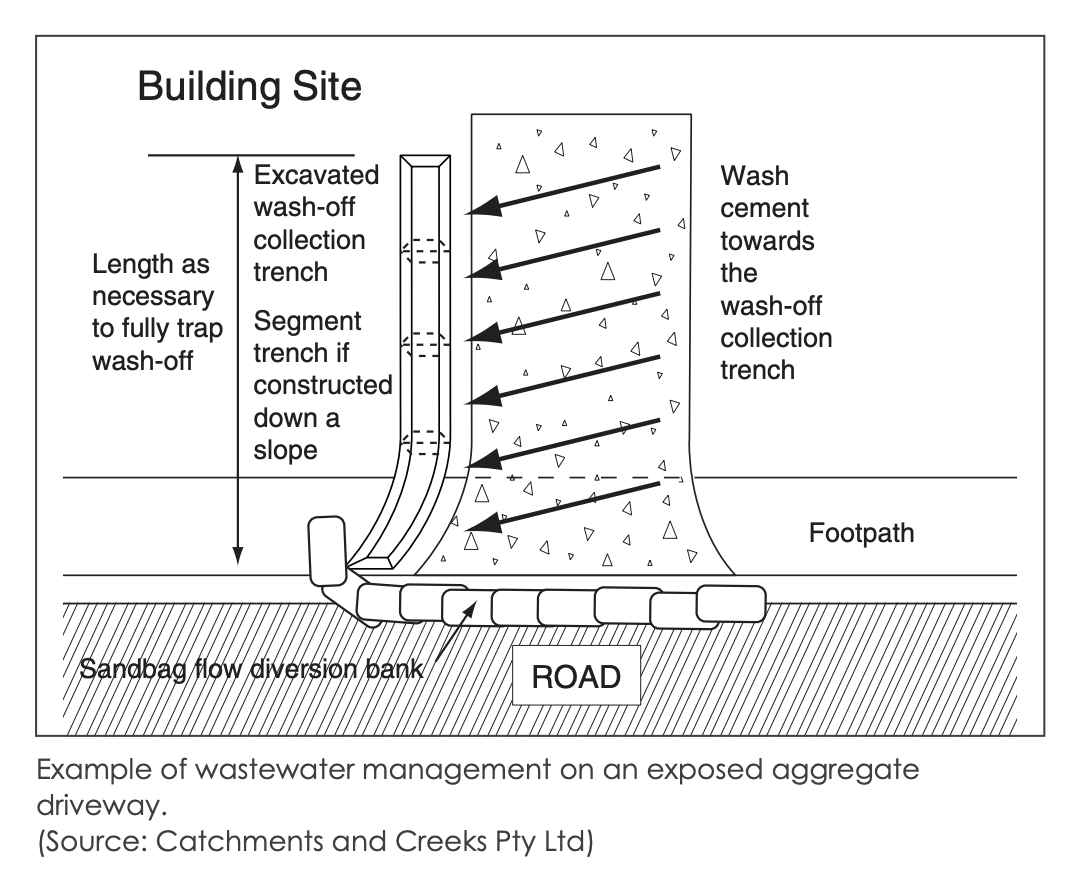


Discussion